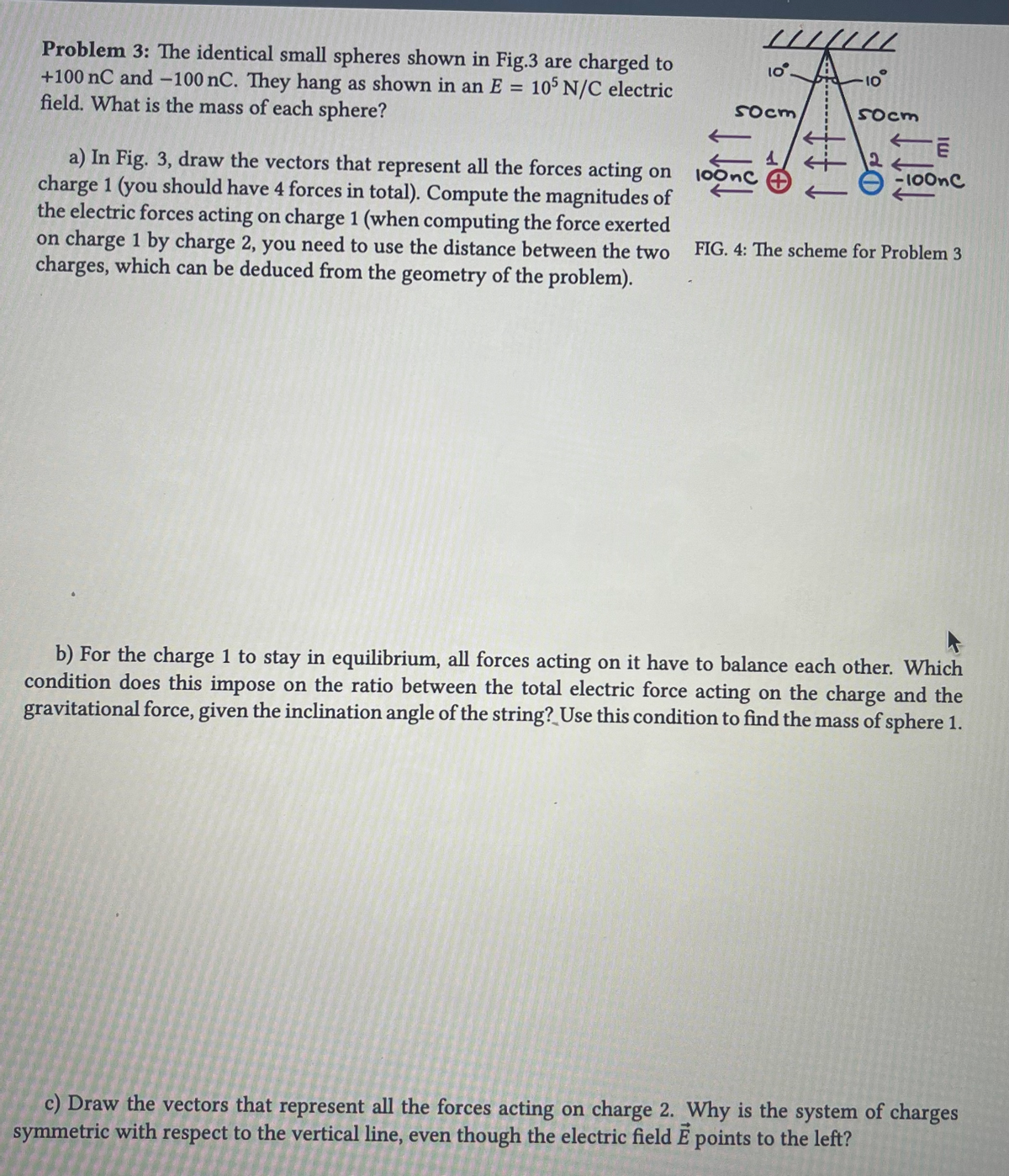Problem 3: The identical small spheres shown in Fig.3 are charged to +100 nC and -100 nC. They hang as shown in an E = 105 N/C electric field. What is the mass of each sphere?
Problem 3: The identical small spheres shown in Fig.3 are charged to +100 nC and -100 nC. They hang as shown in an E = 105 N/C electric field. What is the mass of each sphere?
Physics for Scientists and Engineers: Foundations and Connections
1st Edition
ISBN:9781133939146
Author:Katz, Debora M.
Publisher:Katz, Debora M.
Chapter23: Electric Forces
Section: Chapter Questions
Problem 29PQ: Two particles with charges q1 and q2 are separated by a distance d, and each exerts an electric...
Related questions
Question
I need help with a,b,c cause I am having trouble with this problem and my professor won't help.

Transcribed Image Text:Problem 3: The identical small spheres shown in Fig.3 are charged to
+100 nC and -100 nC. They hang as shown in an E = 105 N/C electric
field. What is the mass of each sphere?
a) In Fig. 3, draw the vectors that represent all the forces acting on
charge 1 (you should have 4 forces in total). Compute the magnitudes of
the electric forces acting on charge 1 (when computing the force exerted
on charge 1 by charge 2, you need to use the distance between the two
charges, which can be deduced from the geometry of the problem).
(11
10°
50cm
100nc +
-10°
50cm
100nC
FIG. 4: The scheme for Problem 3
b) For the charge 1 to stay in equilibrium, all forces acting on it have to balance each other. Which
condition does this impose on the ratio between the total electric force acting on the charge and the
gravitational force, given the inclination angle of the string? Use this condition to find the mass of sphere 1.
c) Draw the vectors that represent all the forces acting on charge 2. Why is the system of charges
symmetric with respect to the vertical line, even though the electric field E points to the left?
Expert Solution
This question has been solved!
Explore an expertly crafted, step-by-step solution for a thorough understanding of key concepts.
This is a popular solution!
Trending now
This is a popular solution!
Step by step
Solved in 7 steps with 3 images

Knowledge Booster
Learn more about
Need a deep-dive on the concept behind this application? Look no further. Learn more about this topic, physics and related others by exploring similar questions and additional content below.Recommended textbooks for you

Physics for Scientists and Engineers: Foundations…
Physics
ISBN:
9781133939146
Author:
Katz, Debora M.
Publisher:
Cengage Learning

Physics for Scientists and Engineers: Foundations…
Physics
ISBN:
9781133939146
Author:
Katz, Debora M.
Publisher:
Cengage Learning